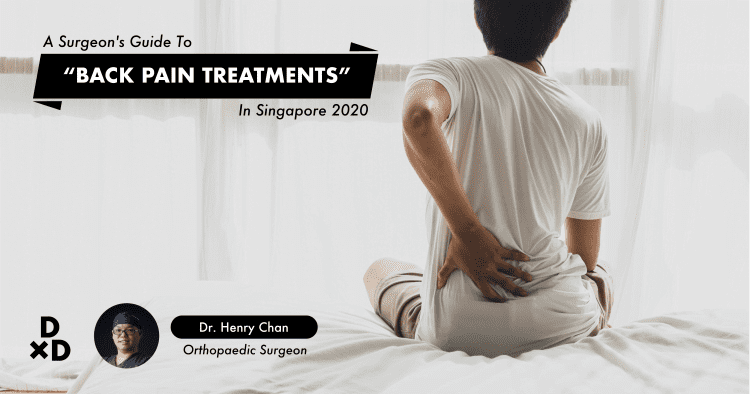Are you experiencing pain in the hand and wrist? You may have carpal tunnel syndrome that causes numbness, pain, tingling and weakness.
But what is CTS exactly and how do you know if you have a suspected case of CTS?
What is carpal tunnel syndrome?
Carpal tunnel syndrome (CTS) is a condition that manifests when a nerve (median nerve) running through a narrow passage of ligaments and bone (carpal tunnel).
CTS is one of the most common conditions I see in my practice as a hand surgeon – it is estimated that 5% of Singaporeans will experience CTS at some point in their lives.
I have decided to put together this guide to help you find out if CTS may be the cause of your wrist issues and what you can do about it.
(Make sure you are maintaining a good hand posture while reading this article. I don't want to be the cause of your CTS woes.)
Symptoms of carpal tunnel syndrome
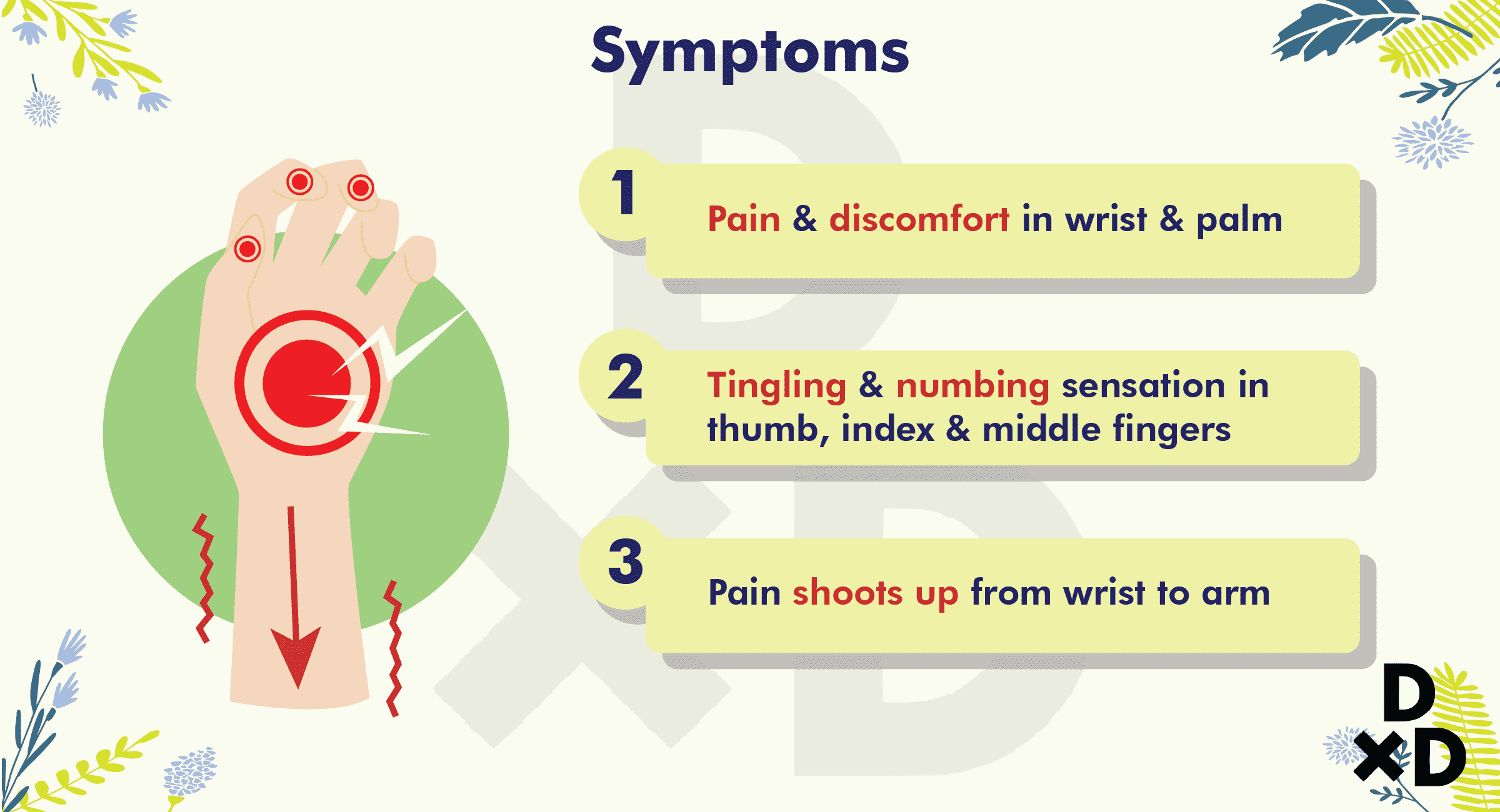
Carpal tunnel syndrome (CTS) usually presents itself with pain and discomfort in the wrist and palm of your hand. A tingling and numbing sensation can be felt in the thumb, index and middle fingers [1]. This is one of the first few symptoms you experience with carpal tunnel syndrome.
Take note: most times, the pinkie/little finger is not affected.
You may also experience pain that shoots up from your wrist to your arm while performing regular everyday tasks such as driving and using your phone.
The 3 stages of carpal tunnel syndrome
1 (Mild)
2 (Moderate)
3 (Severe)
Tingling and numbness that comes and goes
Experience constant tingling and numbness that worsens during repetitive activities
Weak grip
Extreme numbness
Weak grip
The causes of carpal tunnel syndrome
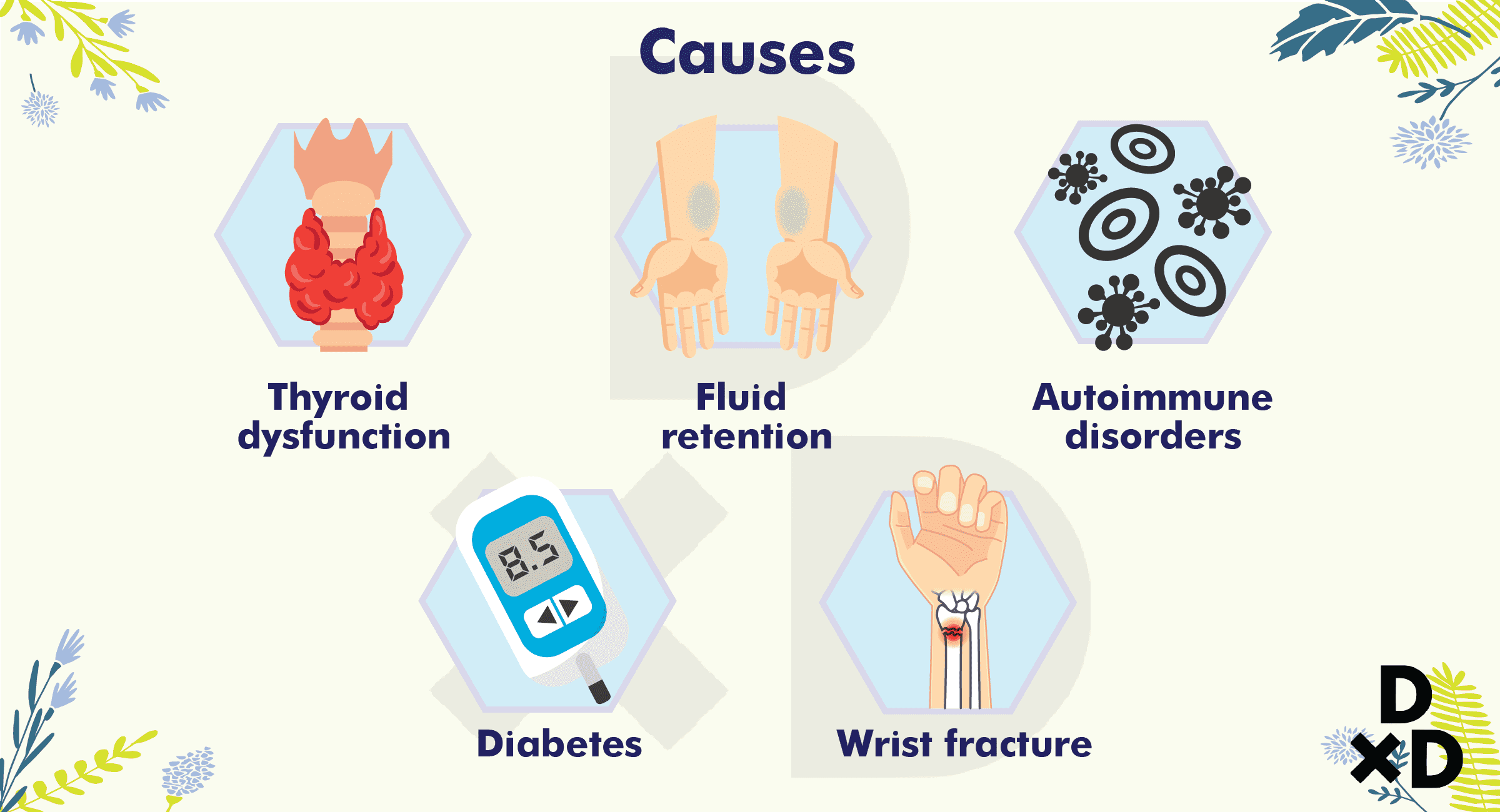
Carpal tunnel syndrome occurs when too much pressure is put on the median nerve. This is a nerve that runs through your wrist to the hands and fingers via a passage in your wrist bone called the carpal tunnel.
Any swelling in the carpal tunnel pinches the nerve, causing the following symptoms in the hand:
- Pain, especially at night
- Numbness and tingling
- Weakness
Swelling of the tunnel is the most common cause of CTS. Various medical conditions have been linked to carpal tunnel syndrome [2]:
- Thyroid dysfunction
- Fluid retention
- Autoimmune disorders
- Diabetes
- Fractures to the wrist
To add on, existing CTS symptoms can be made worse by overextending the wrist repeatedly without rest. In combination, repetitive motions of the wrist can lead to swelling and compression of the median nerve [3].
If left untreated, these symptoms can spread to your shoulders and cause permanent damage.
Risk factors of carpal tunnel syndrome
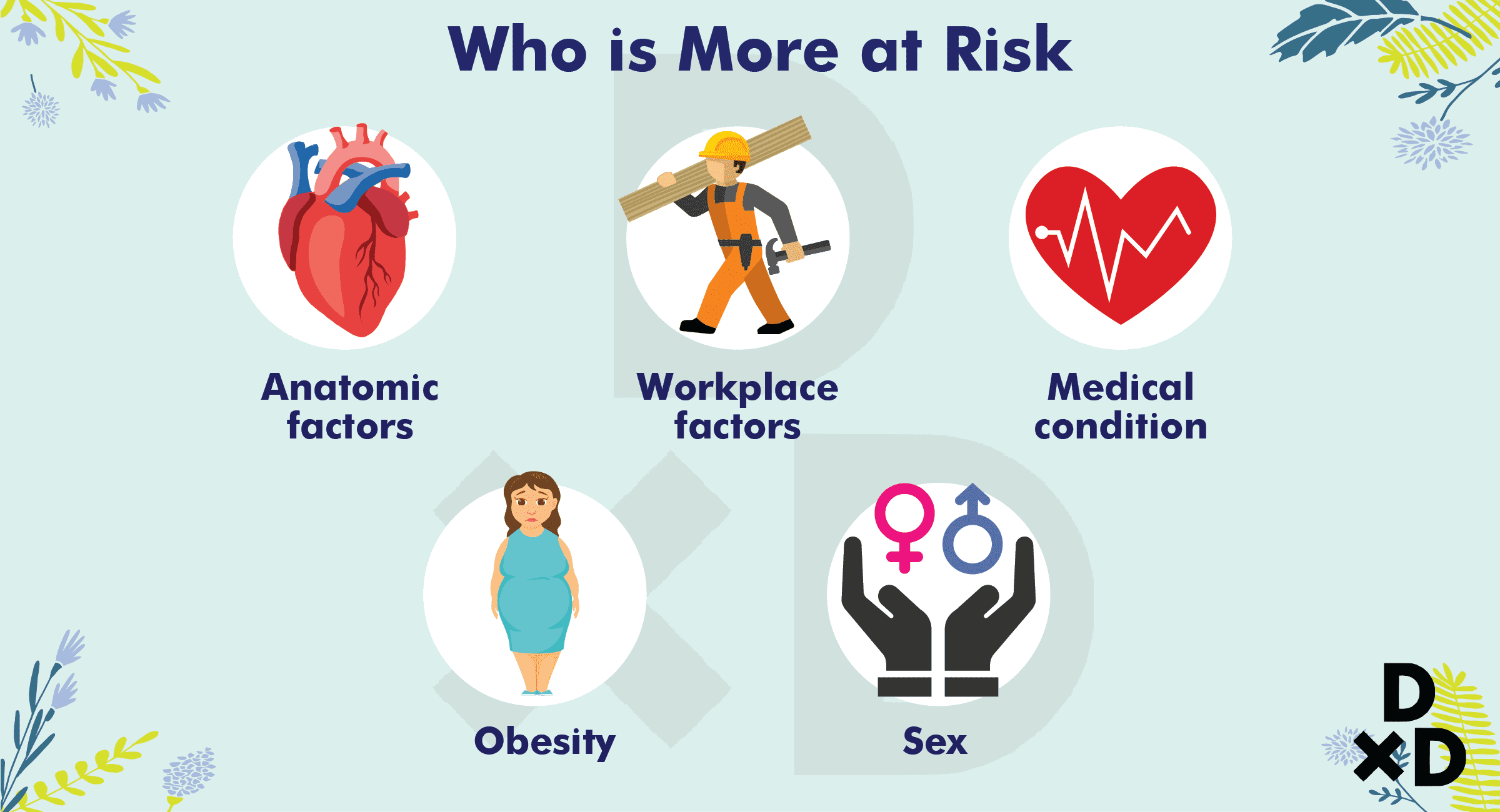
Some people are at more risk of developing carpal tunnel syndrome than others. These factors include [2]:
- Anatomic factors
- Your sex
- Workplace factors
- Obesity
- Medical conditions
Treatments available for carpal tunnel syndrome
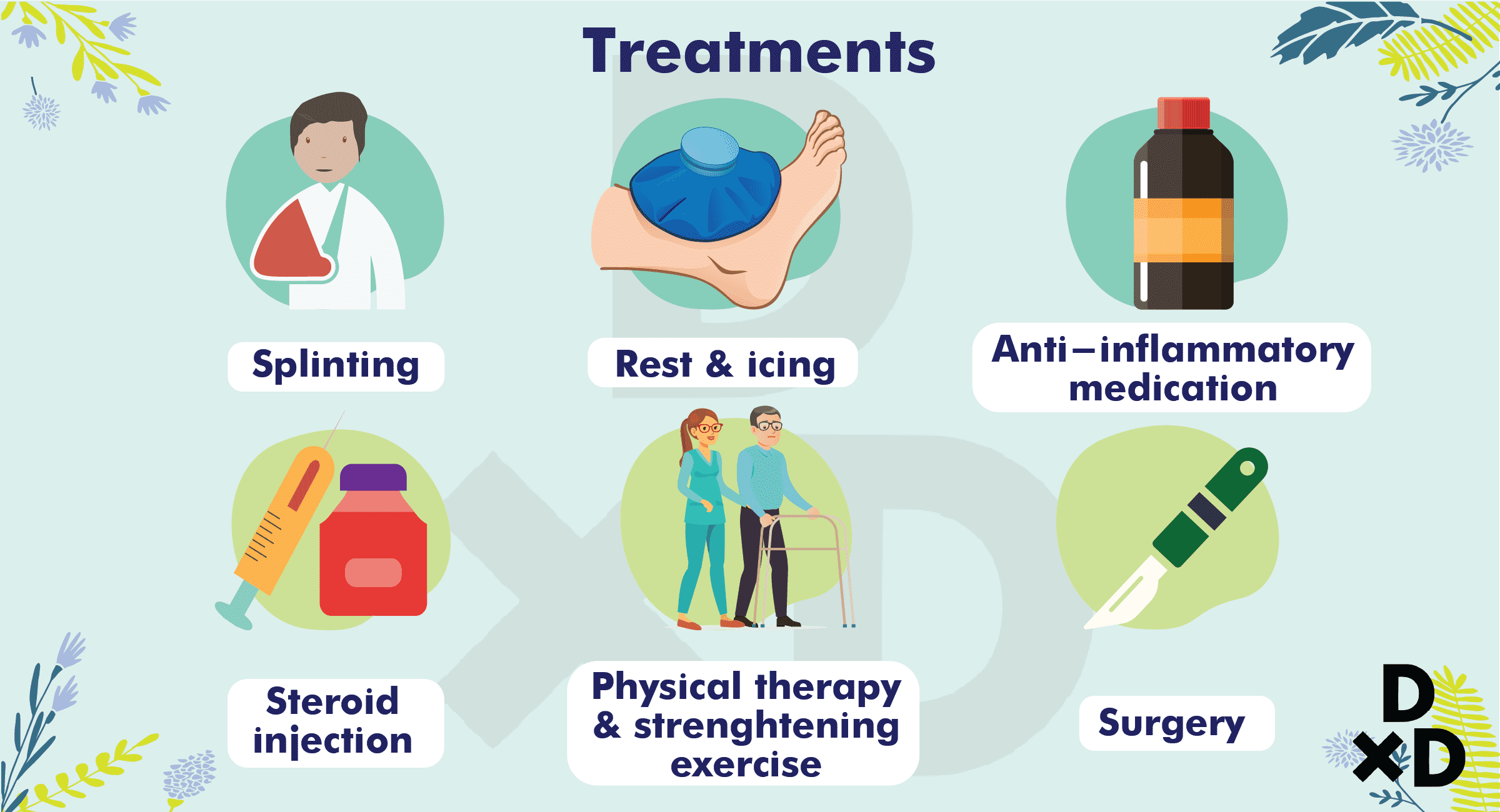
As a hand surgeon, I always pay attention to my patient’s age, occupation and other risk factors when I first meet them. This information will help me to come up with a suitable treatment plan.
For some patients, surgery may be unnecessary. Their symptoms can simply be treated with conservative measures such as [4]:
- Splinting
- Rest and icing
- Anti-inflammatory medications
- Steroid injections or
- Physical therapy and strengthening exercises
For other patients, if symptoms do not improve, surgery may be a necessary course of action to help relieve the pressure around your wrist nerve.
Surgical treatment options for carpal tunnel syndrome
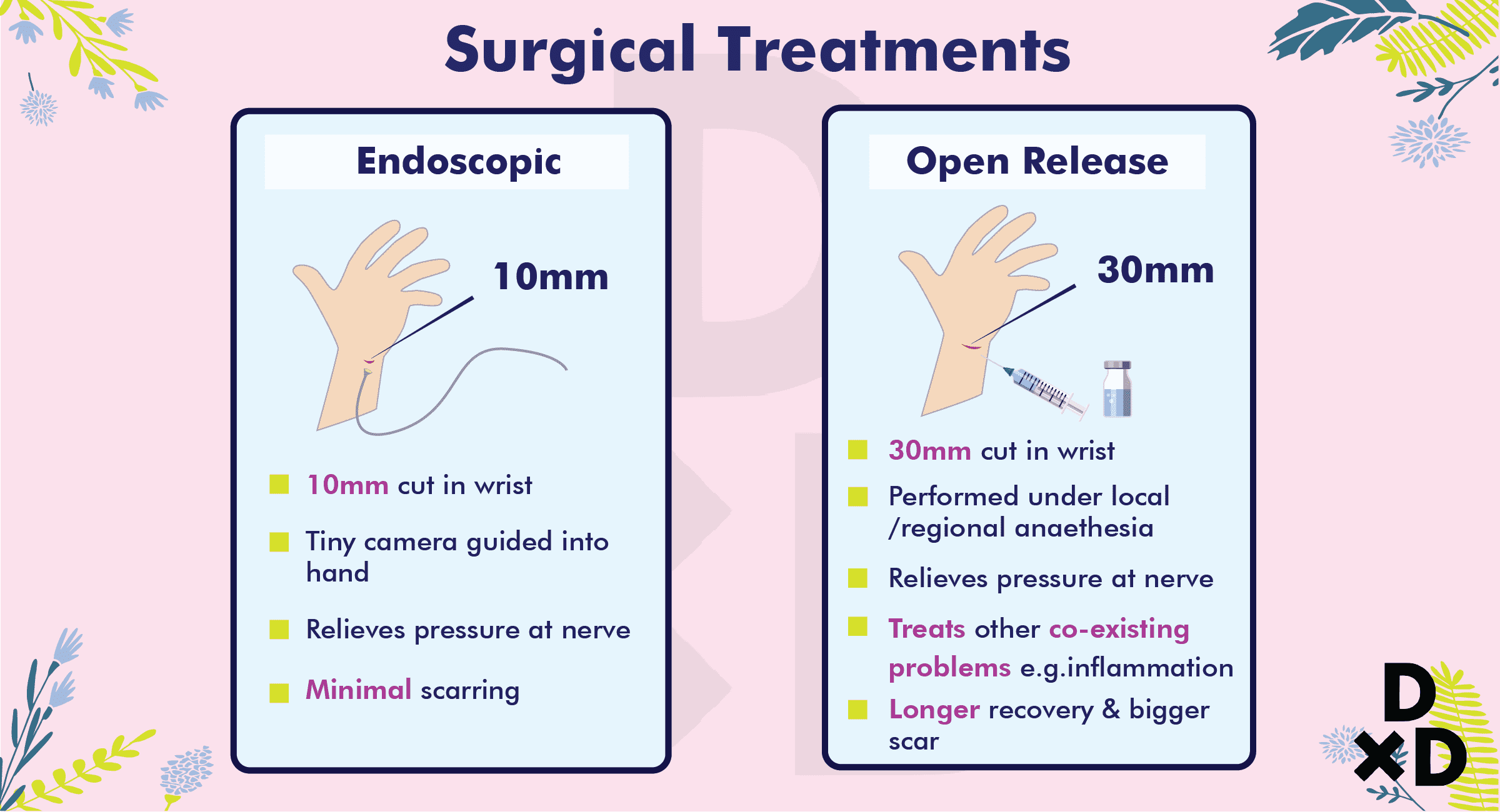
It is best to have a discussion with your surgeon on which treatment option is most appropriate for you. They will collect your history and assess your condition so to assist you in making the most informed decision possible. The 2 types of carpal tunnel operations are [5]:
- Endoscopic
- Open release
Endoscopic
A small cut, about 10mm long, is made in your wrist. Subsequently, a tiny camera is guided through a thin tube into the hand.
With this, it will allow for me to relieve the pressure at your nerve while ensuring minimal scarring.
If you prefer something more visual, watch the video below:
Open release
Considered to be the gold-standard procedure for CTS, a 30mm-long incision will be made in your palm. This will allow for me to relieve the pressure on your wrist nerve while simultaneously treating any other co-existing problems that you may have (such as ganglions or inflammation). This surgery is performed under local or regional anaesthesia.
In addition, this procedure has a success rate of 90% in several studies [6].
However, the downside to open release surgery is that it tends to result in a slightly longer recovery period and a bigger scar. This is why I prefer to use the minimally invasive endoscopic techniques whenever possible to ensure a shorter recovery time and a smaller scar.
Getting treatment for carpal tunnel syndrome in Singapore
You can go to your local GP for mild CTS. They will usually recommend conservative treatments such as night splints, activity modifications and hand exercises.
However, if you have severe CTS symptoms or if the conservative treatments have not worked, you may then be referred to a hand surgeon.
Hand surgeons, like myself, are orthopaedic surgeons that specialise in areas of treatment for the hand. Most of us also provide treatment for the wrist, arm, elbow, and even the shoulder. We offer a wide variety of hand treatments which includes:
- Carpal tunnel syndrome
- Sports injuries
- Broken hands/fingers
- Reattachment surgery for severed hand or fingers
If you feel pain or discomfort in your hand or wrist, no matter how mild or severe, you should seek appropriate treatment from either a GP or a hand surgeon. Early medical intervention with the appropriate treatment can be beneficial as it may relieve you from pain and prevent your condition from becoming worse.
Your hands and wrists play a valuable part in the quality of your life and they are often taken for granted until we experience any sort of pain which hinders our ability to perform daily tasks. As such, be sure to seek early medical help for treatment.
Cost of carpal tunnel syndrome surgery in Singapore
Carpal tunnel syndrome surgery can range from around S$2,150 to more than S$3,350 [7]. The final cost of your surgery will depend on the complexity of your case. Take note that these figures are for unsubsidised rates. If you are interested in the fee benchmarks for carpal tunnel release, you can visit here.
Always remember: there are a variety of factors that affect the total cost of the treatment. You should always consult your doctor about the estimated cost of your individual case.
Don't worry, carpal tunnel syndrome surgery is comfortable
Most of the pain is felt when local anaesthesia is injected into your wrist before the procedure. You will have little to worry about as you will be comfortable throughout the actual surgery.
After the surgery, you will feel some mild pain. This is normal and a natural part of the post-operative recovery process.
Over-the-counter medicines such as Ibuprofen can help to reduce any pain and inflammation.
What happens after carpal tunnel syndrome surgery?
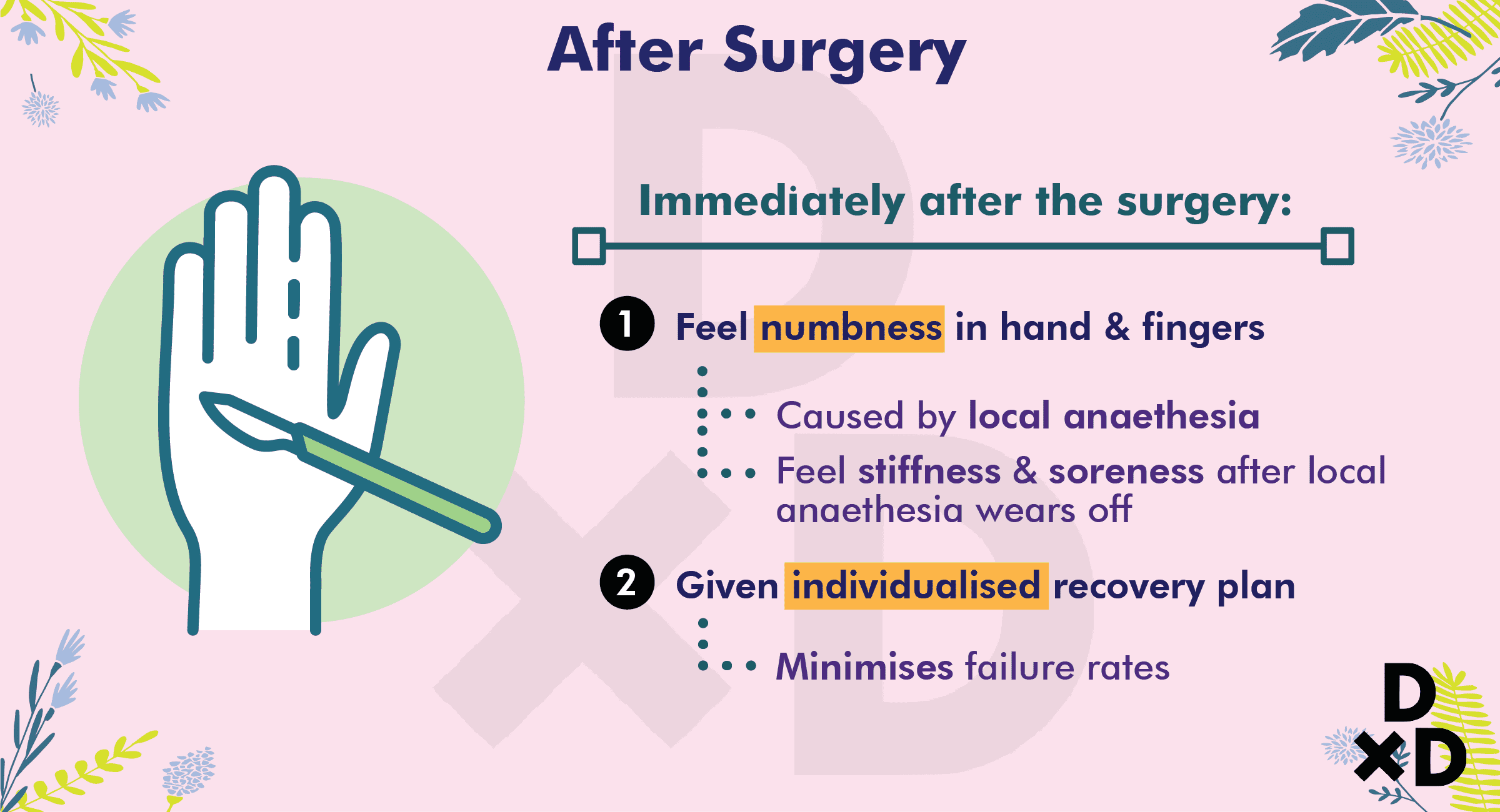
Immediately after the surgery, you may feel some numbness in your hand and fingers due to the effects of local anaesthesia. As it wears off, you may feel some stiffness and soreness.
I always take care to explain all my findings at the time of surgery to my patients after the procedure. All of my patients also get an individualised recovery plan to minimise failure rates.
Carpal tunnel syndrome surgery is not always 100% successful
In most cases, your symptoms will completely disappear after surgery and you may make a full recovery in just a few days. However, some patients have noted that they were not symptom-free only until after a few months [8].
The recovery time ultimately depends on how badly your nerve was initially damaged before surgery.
After surgery, a small number of patients may find that their pain, tingling and numbness either doesn't go away or returns at a later point in time.
The chances of the surgery failing are greater if you had surgery at a much later stage. Hence, it is important to get assessed and treated by a doctor as soon as possible.
Getting the best results after carpal tunnel syndrome surgery
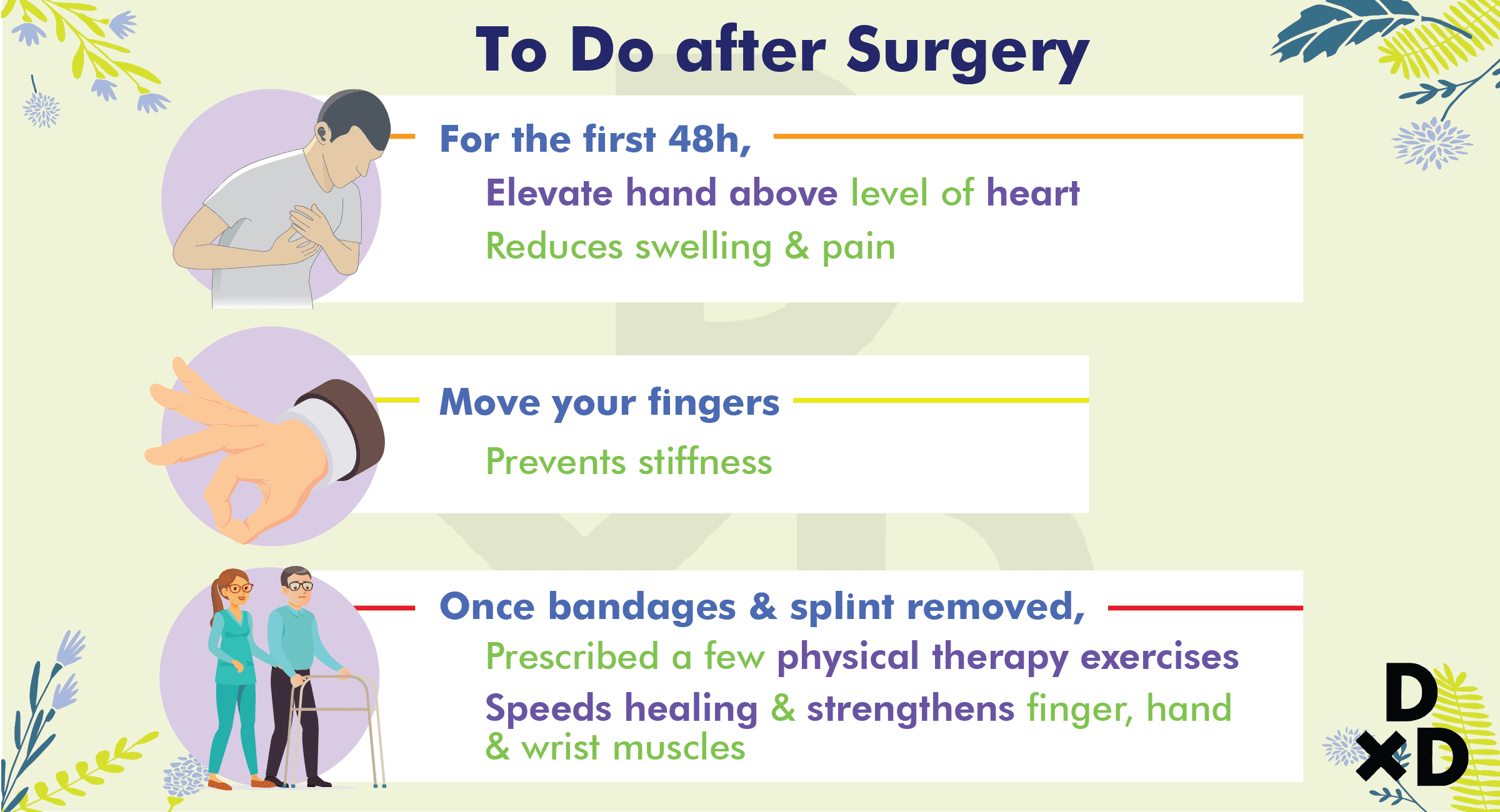
After surgery, your wrist will be placed in a heavy bandage or splint for anywhere from a few days to a couple of weeks.
Here are some tips I give to all my patients so that they may get the best results after surgery:
- Elevate your hand above the level of your heart as much as you can for the first 48 hours to reduce swelling and pain
- Move your fingers early on to prevent stiffness.
- Once the bandages and splint are removed, you will be prescribed physical therapy exercises to speed up healing and strengthen your finger, hand and wrist muscles.
How long will it take before you can return to work after carpal tunnel syndrome surgery?
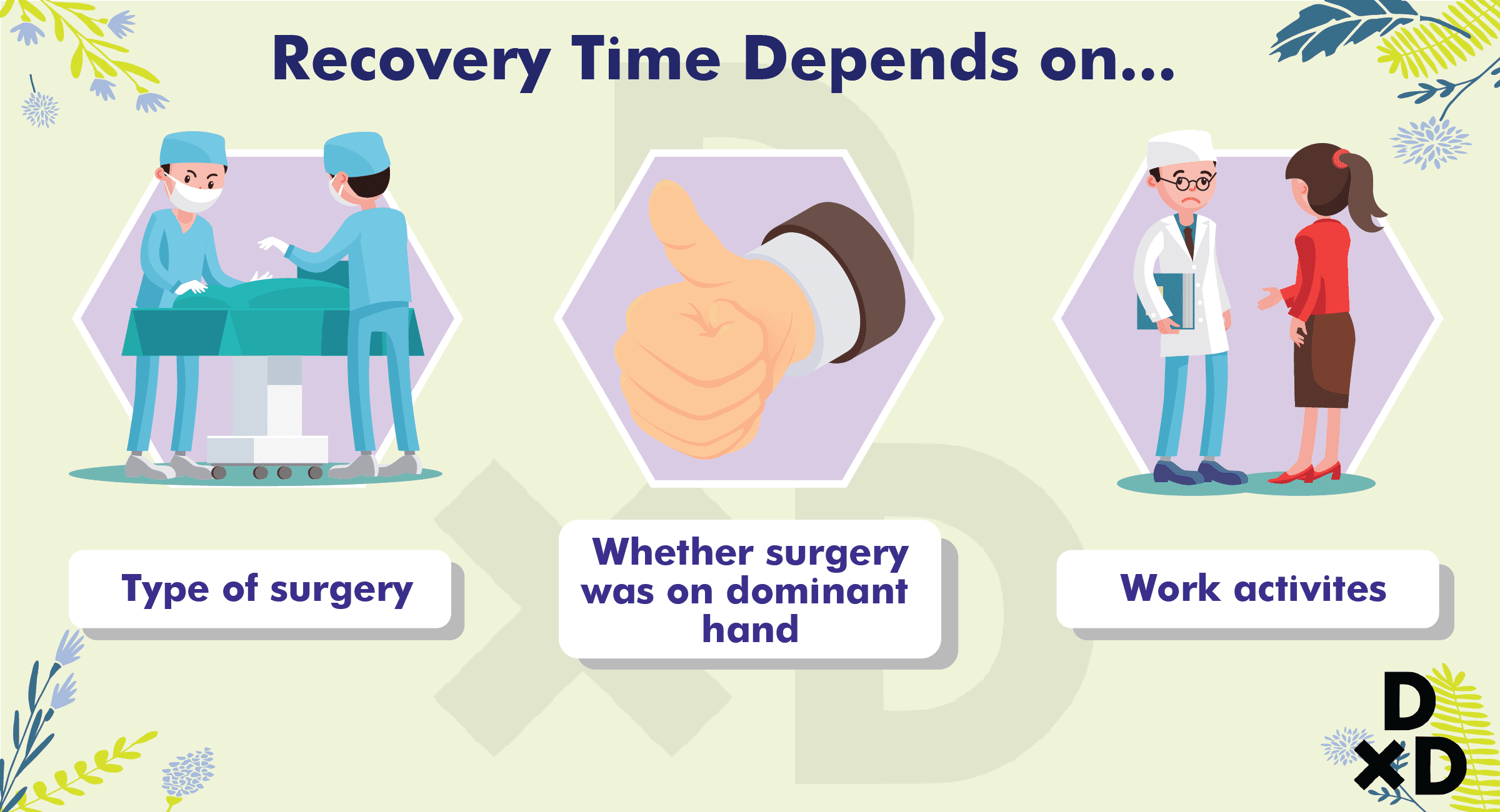
How soon you can return to work depends on:
- The type of surgery you had
- Whether the surgery was on your dominant hand
- The type of work activities you use your hands for
For example, if you had endoscopic surgery on your non-dominant hand, and you only perform very light actions at work, you might be able to return to work in 1-2 weeks.
However, if you had open release surgery on your dominant hand and do repeated actions at work such as typing or heavy lifting, you may have to be off work for 6 to 8 weeks.
I normally recommend 2 weeks off work before re-evaluating and providing further recommendations at the 2-week mark.
Finding the best hand surgeon in Singapore for carpal tunnel syndrome treatment
In order to get the best medical experience possible, you will need to find an experienced hand surgeon with the following traits:
- Medically qualified, of course
- Attentive to their patients' concerns
- Knowledgeable in his/her work area
- Has a strong work ethic
You may consult with a few hand surgeons until you find one that you are most comfortable with before you decide to go for surgery.
Prevent yourself from getting carpal tunnel syndrome
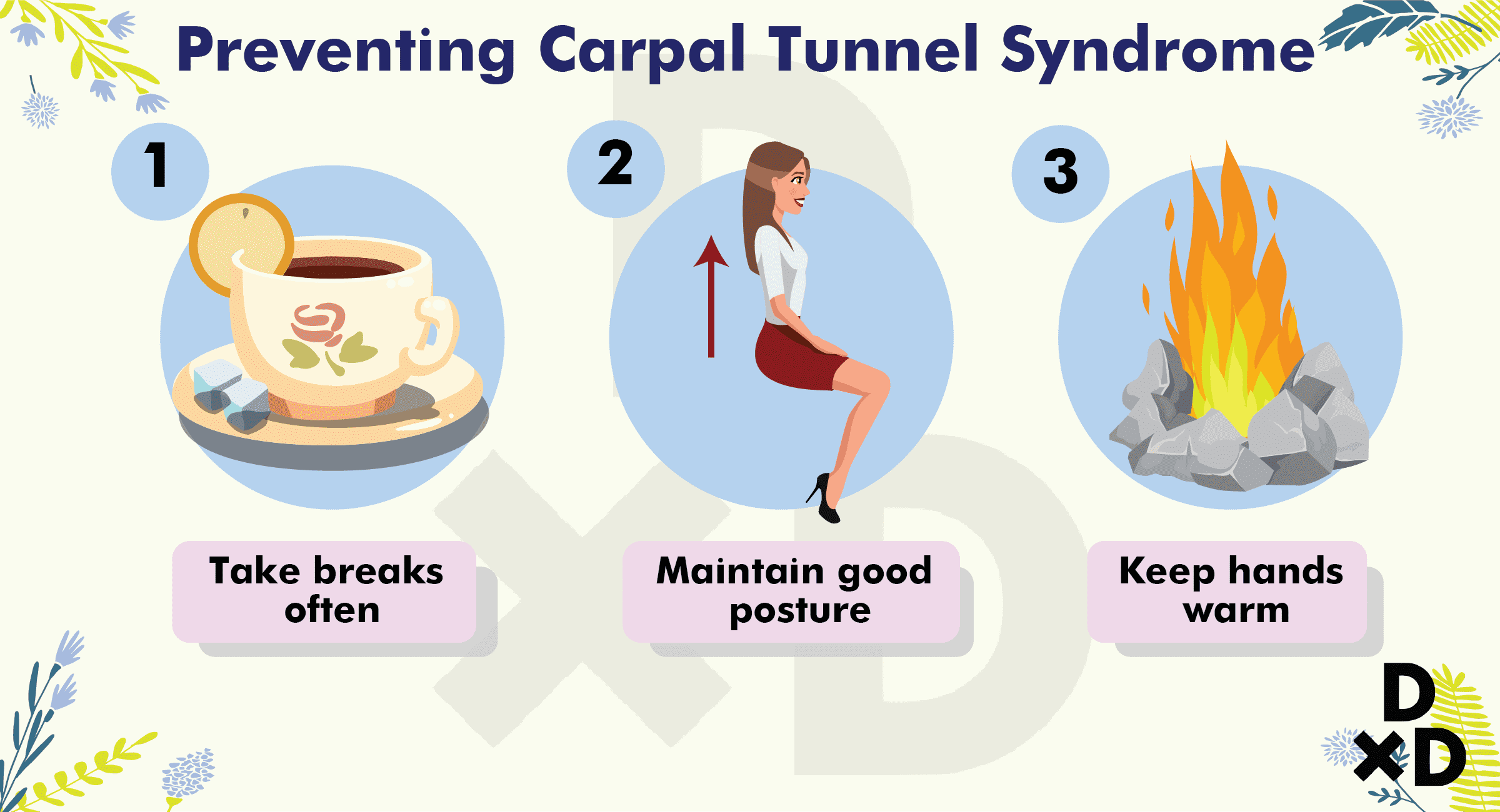
Unfortunately, there are no proven ways to help prevent carpal tunnel syndrome. However, there are methods to reduce the stress placed on the hands and wrists:
Take breaks often
As busy Singaporeans, we often get lost in work and forget to take needed breaks. However, you should make it a point to take breaks periodically to stretch and bend your hands and wrists gently. Try not to perform the same repetitive tasks as well and alternate between tasks if possible.
Be mindful of posture
Keep your wrists at a neutral position whenever possible. If your job requires you to use a keyboard for hours at a time, keep your keyboard at an elbows’ height. This keeps your wrist in a straight relaxed position as you type.
Keep hands warm
Cold environments are more likely to cause hand pain and stiffness. If you have to work in a cold environment, put on gloves to protect your hands and wrists and to keep them warm.
All in all
Remember, carpal tunnel syndrome can range from mild to severely painful and uncomfortable symptoms. In most cases, you will feel tingling and numbness in your thumb, index, middle and ring finger and rarely in your little finger. You will also experience pain that shoots from the wrist up to the arm, and symptoms may worsen when stress is placed on the wrist.
You should consult a doctor about your symptoms for available treatment options which typically includes conservative methods such as splints, icing, resting, medications, steroid injections and hand exercises as well as invasive procedures such as surgery.
If you have a job that places excessive stress on your hands and wrist, be sure to exercise some precaution and take breaks often to rest them. If you notice you have developed pain around your hands or wrists, do consult a doctor so he/she may evaluate your condition and provide the appropriate relief and treatment.
Dr Jonathan Lee is a board-certified hand surgeon who specializes in surgery of the hand and reconstructive surgery. He is also an aesthetic doctor who focuses on Aesthetic and Rejuvenative Medicine for the face, skin, and body. His treatments programs are customised to the individual needs and usually includes a range of non-invasive procedures to optimise maximize results while keeping downtime to a minimum.
Read more on Dr Jonathan Lee's QnA here.
References:
1. Carpal Tunnel Syndrome Information Page | National Institute of Neurological Disorders and Stroke. Nih.gov. Published 2019. Accessed January 10, 2020.
2. Carpal Tunnel Syndrome Fact Sheet | National Institute of Neurological Disorders and Stroke. Nih.gov. Published 2017. Accessed January 10, 2020.
3. Carpal Tunnel Syndrome - Symptoms and Treatment - OrthoInfo - AAOS. Aaos.org. Published 2016. Accessed January 10, 2020.
4. Carpal Tunnel Syndrome: Diagnosis and Treatment Trial - Full Text View - ClinicalTrials.gov. Published 2013. Accessed January 10, 2020.
- Carpal tunnel syndrome: When is surgery considered or needed? Nih.gov. Published November 16, 2017. Accessed January 10, 2020.
6. Louie D, Earp B, Blazar P. Long-term outcomes of carpal tunnel release: a critical review of the literature. HAND. 2012;7(3):242-246. doi:10.1007/s11552-012-9429-x
7. MOH | Fee Benchmarks and Bill Amount Information. Moh.gov.sg. Published 2019. Accessed January 27, 2020.
8. Mayo Clinic Q and A: Recovery after surgery for carpal tunnel syndrome — what’s normal and what’s not. Published 2019. Accessed January 10, 2020.


